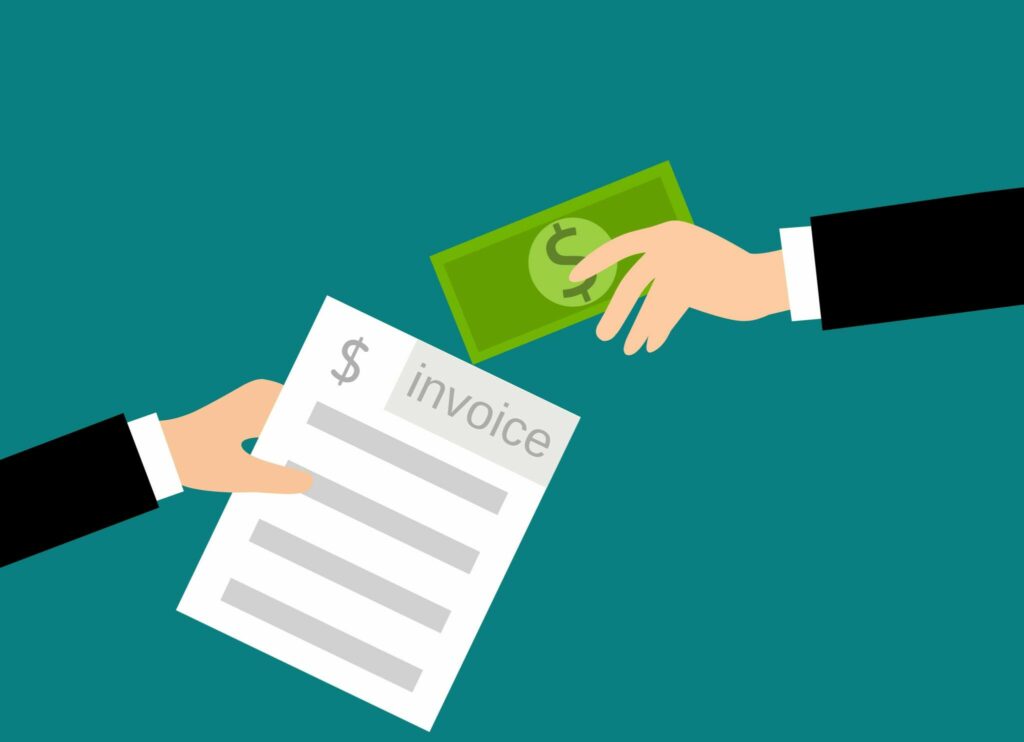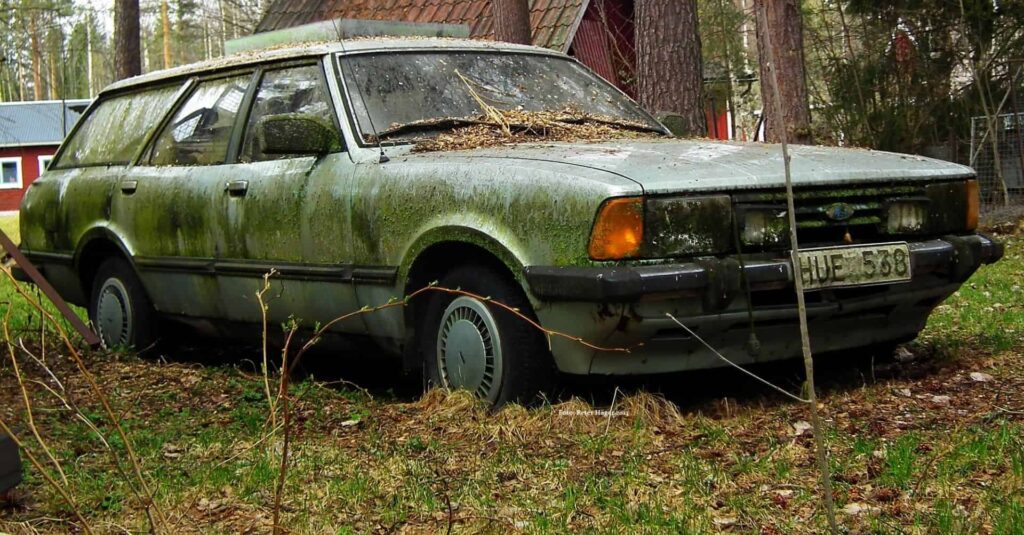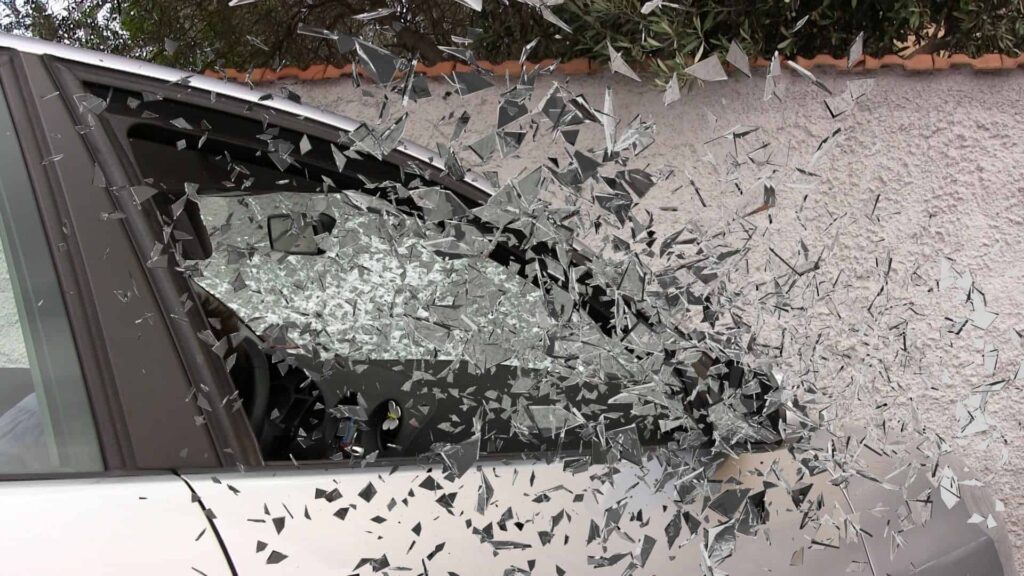13 April 2021 Concept Car
After the deal is done, very few drivers feel they’ve paid the right price for their car. Maybe you do, too. And that’s understandable. You could probably have haggled a little more. And who knows, if you’d have waited a little longer, you might have spotted an even better bargain to begin with.
But what, exactly, is the right price for a given vehicle?
If you’re asking yourself this question, you’ve come to the right spot. In this expansive article, we’ll explain to you …
Are you ready to discover the secrets of the trade that will give you an advantage over other buyers and car salesmen? Then, without further ado, let’s begin.
Welcome to your journey into the confusing worlds of car pricing. It all starts here, with the RRP.
What does RRP mean?
The abbreviation stands for Recommended Retail Price. As we’re sure you know, when you walk into a showroom, you’ll see flashy stickers attached to the windows of the automobiles on sale. The number on these stickers is the RRP. This, as you’ve probably figured out by now, is why it is also sometimes referred to as the Sticker Price.
How does the dealership arrive at the sticker price?
Surprise fact: It doesn’t. The sticker price is not determined by the dealership, but by the car manufacturer. It is the price that they suggests the dealership sell it at. For this reason, some have given it a third name: the Manufacturer Price.
They tend to be identical, yes. That’s not to say that there can’t be any differences. In principle, dealerships are entirely free to set their price level. They are not usually contractually obliged to display the recommended retail price.
But in general, dealers will use the RRP to set the initial price level for all their cars. There are very good reasons for this, if only for the fact that dealerships rely on a good relationship with manufacturers for their business. And manufacturers feel strongly about the RRP.
Many cars are luxury products. With brands like Audi, BMW or Lexus, the price is part of the make’s image. If it drops too much, manufacturers fear, their reputation will suffer for it.
This logic works the other way round, too. Some manufacturers are vying for the title of the cheapest car on the market. Or they simply want to ensure that a certain demographic can definitely afford their models. To them, the RRP prevents their cars, which can be extremely popular, from rising in price too much.
Another aspect is that sticker prices protect dealerships. As a general rule. they tend to drive prices up, which guarantees a certain price level. Standardises prices also even out the income stream. They provide for more stability and security. All of which are valuable factors in a world otherwise dominated by constant changes.
RRPs can also lead dealerships to compete on service and quality rather than price level. That can be an important consideration, especially if you rely on the same dealership to take care of repairs and servicing.
Ironically, even customers stand something to gain. From a psychological perspective, it is highly satisfying to buy a car well under the sticker price. So for those who love to haggle, the sticker price is a welcome challenge.
The RRP makes it possible for dealers to justify artificially inflated prices.
They will argue that they are not free to set prices themselves and thus can not simply make the cars cheaper. It also means there is no longer any real competition between dealerships anymore. Wherever you go, you’ll find the same manufacturer prices, so there is no real incentive to take your money elsewhere.
Many have argued – and still do – that the RRP contradicts market-economic principles. For this reason, UK legislators prohibited the use of manufacturer prices for many years.
In 2012, however, the Competition Commission lifted the ban. Since then, the RRP has remained in place.
It’s not just the UK. Globally, the RRP is a fairly common practise. Most European countries have similar concepts – in the USA, for example, the MSRP is pretty much the same thing. As do other industries: In Germany, for example, the price of books is fixed price by the publishing houses and book stores are not allowed to change it in any way, unless the book is visibly damaged.
So does all of this spell bad news for consumers? It depends. Honestly, in itself, the RRP need not be a problem. The reason is simple:
As the name already indicates, the RRP is merely a recommendation. Both the manufacturers and the dealers love it and gain considerable benefit from it. But they don’t actually expect you to pay it.
In some select cases, if we’re talking about an eagerly awaited brand new model, things may be different. When Volkswagen announced the ID.4, the pre-order waiting list was extremely long. So, in that case, trying to haggle would have looked silly. In very few cases, the actual price you pay may even be above the RRP, if the dealer feels that she can get an even better deal. But this, too, is a rare exception.
Usually, the RRP is merely the starting point for price negotiations.
What does that mean?
It means that when you set foot in a dealership, you should already know the sticker price and have considered how much you really want to pay. Then, you can start negotiating with the dealer about the price you’re actually going to pay.
Depending on your negotiating skills, the price you end up paying can be pretty close or pretty remote from the manufacturer price.
But there are also other factors to consider. One important element in determining the final price are the costs for the dealer in procuring the car.
 What is the Invoice Price of a car?
What is the Invoice Price of a car?
To be able to properly negotiate with a car dealer, you will need to know what they paid for it. After all, no dealership will accept losing money on a sale. So, looking at things from this angle, the price they paid the manufacturer is the rock bottom price.
This number is also called the Invoice Price, because it refers to the price the manufacturer invoiced the dealer.
Very rarely will a dealer show you the actual invoice, so you’ll have to take an educated guess about how much it could be. In some cases, you can find helpful information online based on experience from experts and insiders.
Experienced car buyers will then often use the invoice price, rather than the RRP, as their yardstick for price negotiations.
On paper, the invoice price is the price the dealer pays the manufacturer. So surely, they can’t offer you a deal better than that, right?
In fact, they could and if pressed by a truly knowledgeable negotiator, they will.
A dealer can still make money even if they go below the invoice price. In fact, they can still turn a more than handsome profit.
How is this possible?
Of the two, holdbacks are the more complicated concept to understand.
Sometimes, a dealer will actually show you the invoice to argue that they really can’t go any lower with their offer. Technically speaking, it is true that they did pay the car manufacturer the amount specified on that piece of paper. However, it is also true – and this is something they’ll conveniently ‘forget’ to mention – that the same manufacturer will reimburse a percentage of that amount later on.
So, each quarter, the manufacturer will, in return, transfer around three percent of the RRP for each bought vehicle, to the dealer. So, ultimately, the actual price the dealer paid for the car in question is a few hundred Pounds below the invoice price.
Against your initial response, it is not to trick consumers. Initially, holdbacks had absolutely nothing to do with price negotiations, although they conveniently turned out to be a positive factor in this regard.
In a revealing article, Edmunds has explained the actual logic behind this seemingly bizarre practise:
To attract customers, car dealers need to have a large amount of automobiles in stock. They can only afford these huge car parks by taking up loans. Inflating the invoice price and getting the holdback later allows them to borrow more money and thus improve their cash flow. And cash flow, as any controller will tell you, is the number one factor in determining the financial health of a company.
Dealerships pay their employee bonuses for every car they sell. Usually sales personnel make most of their money based on these bonuses, not their fixed salary. So for any dealership that wants to cut costs, bonuses are key. However, this poses a dilemma: How to cut bonuses while still giving an incentive to sell more cars?
Holdbacks are one option. Think of it this way: Bonuses are calculated by taking gross profits as a starting point. Now, if the invoice price rises, then profits drop, because the dealership makes less money on each car sold. So holdbacks lead to
It is saleswomen and salesmen who lose most from this practise.
Holdbacks, as Edmunds stresses, are something of an untouchable in the world of car finance. Technically, you could still try to base your strategy on them. In practise, very few dealers will be prepared to allow this. If you do plan on working with holdbacks, at least make sure not to explicitly mention them.
From time to time, manufacturers will try to incentivise the public to buy certain models by temporarily lowering their price. The savings you make on such a purchase is called a rebate and they’re a very popular sales tool in the car world.
Rebates are paid for by manufacturers. In practise, the way this works is that dealerships communicate the deal to drivers. After the sale has been made at the reduced price, the manufacturer transfers the money to the dealer to compensate them for their loss compared to the invoice price.
It’s a simple concept which can be highly attractive to everyone involved:
This, however, is not how things typically work out. Ask yourself this question:
Then, as you can easily understand, the dealer keeps the entire rebate to themselves. You simply end up paying the amount without the rebate and the manufacturer overpays the dealer for an offer they did not make.
Technically speaking, in many cases, the dealer may not be obliged to tell you about the rebate straight away. Rebates can be a tool of last resort that is only applied at a later stage of the negotiating process to win you over.
That doesn’t take away from the fact that the rebate should belong to you, not the dealer and that the manufacturer wants you to have it, not the dealer.
Rebates can be pretty big, up to a few thousand Pounds in some cases and they can significantly bring down the actual invoice price. So knowing about them can make a major difference.
Take a look at the following example from Car Buying Strategies:
“Invoice price: $20,000
Holdback: $700
Rebate: $3000
Note that the prices above do not reflect a real vehicle – they are simply examples to help illustrate the formula.
$20,000 – $700 = $19,300 dealer cost. If you buy this vehicle for $19,300, you just made a purchase at dealer cost ($700 below invoice). The dealer made $3,000 because they kept the rebate as profit.
Many dealers are willing to make much less profit than $3000. If the vehicle is in high supply with a good rebate you may do much better than the example above.”
Further Reading:
Why haggling is a mistake (and what to do instead)
Used car prices: A guide to the UK market
Used Car Deals: How You Can Get the Lowest Prices
Is it harder to finance a used car than a new one?
 What is the Market Price of a car?
What is the Market Price of a car?
Strictly speaking, there is no such thing as the right price. Sometimes you may feel as though you could have got a better deal. Oftentimes, you will be right. But what will you base that impression on? The market price.
The market price is an average. It looks at the price a car was sold at with different dealers in a certain area over a defined period of time. It is very rare that any car during this period is actually sold at exactly the market value. Usually, buyers will either pay a little more or a little less.
Precisely because the market price doesn’t ‘exist’ in the way we think of a usual price, it is problematic to walk into a dealership and use it as a hook to get the conversation going.
Edmunds is one of the world’s biggest online car sites. Its unique selling point is its information network which allows it to arrive at extremely accurate data on what cars are usually sold at.
Here’s what they write on their website:
“The Edmunds Suggested Price estimates a vehicle’s average transaction price. It is what we recommend you pay, not including taxes or fees. It is based on our analysis of millions of data points, including supply, demand, incentives, options and recent nearby transactions.”
This sounds impressive for sure. But how does it work in practise? Edmunds continues,
“The Edmunds Suggested Price is particularly useful when you use it in conjunction with a price quote from a dealer or when you’re at the dealer to inquire about an auto you’re interested in.
If the car price is greater than the suggested price, mention the figure to the salesperson when you’re countering an offer. Say the salesperson had quoted you a price of $30,000, but the suggested price for the car is $28,000. Tell the salesperson: “I’ve had a chance to do some research on this car, and according to Edmunds, it’s selling for about $28,000. If you can beat that price, we’ll have a deal.”
Dealers are in no way obligated to give you the same deal. They can, with some justification, argue that they may have bought the car from the manufacturer at a different price. Or they could claim that dealers with better prices had a special rebate deal which no longer applies.
The market price also does not take into account that lower prices may be based on trade-in deals. Whenever you trade in your used car, the overall deal will usually get better, as these are highly lucrative for dealerships.
Also, market prices can only offer a sample of all the transactions conducted in a region. Often, they won’t even take the actual selling price into consideration, but instead work with advertised prices only. Which obviously distorts the picture.
By no means! It can provide you with a rough idea of the direction your negotiations should be headed.
But keep in mind, as we have established, that most drivers actually walk away from the dealership with a bad deal, because they are unaware of hidden holdbacks and rebates. So, if you really want to get the best possible offer, you should not aim at a selling price around the market value, but below the invoice price.
Whether or not that is possible will obviously depend on your negotiating skills. But at least knowing which way the journey should be headed is a great start.

As we just mentioned, the Recommended Retail Price is rarely the price you’ll actually pay the dealership. Even if you’re very shy about negotiating, most buyers will ask for a rebate and more often than not, they’ll get at least a small one.
The selling price of a car is the value in Pound the car is actually sold at. This is not counting any other costs which may still come on top of that. We’re purely looking at the nominal price of the naked car itself here.
The selling price is a good indication whether or not you’ve struck a decent deal. But it is rarely the full story. Sometimes, the dealership will not be willing to bring the selling price down. However, they’ll agree to throw in a few extras, such as leather seats or a better entertainment system.
If you can get accessories you really wanted this way, then even a fairly high selling price can be okay.
After you’ve agreed on the selling price with the dealer, you might assume that you now know exactly how much you’ll spend on your new car.
That, however, would be an incorrect assumption. In reality, you’ll need to add quite a few expenses to the equation.
To arrive at this figure, add the following points to the selling price:
The OTR is a useful number. All too often, buyers are content to only look at the selling price of a car. But this is not where the calculations end. Make sure you are not just able to afford the selling price. You’ll need to cover the associated delivery cost, registration, number plate costs and first year’s road tax as well.
 What is the Second Hand Car Price?
What is the Second Hand Car Price?
So far, we’ve only talked about the different price levels for new cars. Whenever you’re looking for a vehicle, however, you should definitely also take used models into consideration.
Some may claim that used cars aren’t really cheaper than new ones. After you’ve deducted (allegedly) higher repair- and petrol costs, (potentially) higher VET and taken the lower resale value of a used car into consideration, these people will say, a new car will often end up costing you pretty much the same amount as a comparable second hand one.
What is true is that, if your timing is good, the car is right and you know all about the specific dealer costs of a car, you can get a price considerably below the RRP.
What isn’t true is that this price, as good as it may be, will ever come close to matching that of a second hand car.
One beauty of the used car market is precisely that choice is almost infinite. If you’re patient enough, you will always be able to find a great deal. You can opt for models which are now out of production, some of which may actually be better than the latest iteration of a particular car. There may even be offers which include plenty of extras at no additional cost.
Add to this the fact that insuring a used car is usually cheaper, too, and it becomes abundantly clear that used will almost always be cheaper.
This may sound like a complicated question. But really, it’s quite simple. Yes, some will become cheaper faster than others, some may retain their value remarkably well, while others drop in price like a stone. Still, for each model, there is a gauge of how much value it loses over time.
This gauge is depreciation.
Depreciation measures how much value a car loses over time. Usually, this amounts to …
After that, a lot depends on mileage and condition. After around ten years, many cars no longer depreciate and the price stabilises, again depending on how well the previous owner has maintained it.
So even if you buy a three year old car – which is almost as good as new – you may only have to pay around half of what it cost when it was still brand new. That’s a remarkable saving!
Although many are still content to buy their second hand cars at their local dealership, there is an entire world of used automobiles outside the dealer model.
This has become even more obvious now the Internet has basically allowed anyone anywhere to post an ad of their car, sell it and keep all the profit to themselves.
For buyers, the private market offers highly attractive deals. Usually, these cars tend to be even cheaper than with dealerships, sometimes considerably so.
Compared to the RRP, these prices can seem absurdly low. Even compared to second hand dealer prices, the savings you can make here are oftentimes spectacular. So especially if you have a tight budget, the free market can be a godsend.
That said, there is a reason why the private sale car price is a lot lower than elsewhere: The risk of a bad car is entirely on you. There is no warranty and no recourse (unless the seller knowingly mislead you). That’s something you’ll need to weigh against the possible savings when considering a car from the free market.
 What is the Actual Cash Value of your car?
What is the Actual Cash Value of your car?
All of the prices we’ve discussed so far are relevant when you’re looking to buy a car. Imagine, though, what would happen if you were to total your car in an accident. What price would your insurance have to pay you based on the current value of your car?
You certainly can’t use the current value of the car. If you totalled the car, its current value is obviously now zero. So that’s not what you’re looking for.
This is where it gets a bit tricky. Your insurer could simply pay you the replacement value of your car.
The replacement value denotes the cost of either
However, cars, as we know, depreciate over time. So the replacement value will usually be higher – usually even notably so – than what your car is really worth.
To reflect this, insurers will deduct the depreciation from wear and tear as well as the mileage to arrive at a more accurate number.
No and that’s another reason why the Actual Cash Value is problematic.
For one, there is no single, universally accepted formular for calculating depreciation. Some insurance companies will use a steeper curve than others. The exact shape of the curve may also depend on the specific model and trim level.
What’s more, there can be discussion about the value of a comparable replacement as well. No two cars are ever exactly the same, so you could argue what car is actually a true replacement for yours.
As a result, insurance companies and insured drivers often argue over the Actual Cash Value in court.
 What is the Balloon Payment Price?
What is the Balloon Payment Price?
Most prices we’ve investigated so far are related to the traditional model of buying a car from a dealership. This is to say: You decide on a car and then take out a loan to pay for it. There is nothing wrong with this in theory. In practise, however, at least when it comes to new cars, very few drivers actually make use of this method anymore.
The large majority by far today opt for a different payment model called PCP. The abbreviation stands for Purchase Contract Plan. A PCP allows you to drive brand new, high quality cars for a very reasonable price without having to commit to buying them straight away. No wonder it won over the world of car finance in a storm.
You could think of PCPs as being very similar to leasing. The main difference is that with leasing contract, you always return the vehicle to the dealership after your contract has expired, which usually occurs after three years. With a Personal Contract Plan, you can still decide to buy the car. To do this, you’ll need to pay the outstanding balance. This amount is called the balloon payment, because it covers the entire remaining cost for the car in a single, big lump sum.
When you agree to a PCP, the dealer estimates the balloon payment by applying a depreciation curve to your particular car. She has to do this, because she can not be certain how much this particular model will be worth in three years time. Usually, however, these estimates are pretty accurate.
Your monthly payments are essentially calculated on the basis of this assumed depreciation of the car plus an interest component.
The idea is that what remains after the period had expired is the value of that specific car. However, markets may – and will – change. So it is possible that current depreciation numbers no longer apply in three years time. Your car could be worth more than predicted. But it could also be worth (a lot) less.
This is why the dealer selling you the car will specify a contractually binding value to minimise the risk of it suddenly dropping in value more rapidly than expected. This is called the Guaranteed Future Value or GFV.
There is a reason why PCPs have become the new standard in car finance, at least when it comes to new models:
The main disadvantage is that when it comes down to it, they are usually the most expensive form of driving.
This is because over the lease period of the contract, you’re not paying off a lot of the value of the car. What you’re paying off, really, is just the interest and it quickly adds up. After three years time, the GFV is still pretty high.
In fact, most drivers decide not to buy the car after three years and instead take out a new contract for a different car instead. This, however, locks them into a perpetual cycle of new PCP agreements.
In itself, this need not be an issue, but it most certainly can be. Read more about PCPs and why they can be problematic on our blog.
Further Reading:
What’s best: PCPs or used cars?
But it is also where it could start for you. At Concept Car Credit, you can find some of the best prices for used cars combined with affordable financing even for those with bad credit.
Visit our digital showroom to take a look at our selection or call us now to talk about financing your car. We look forward to helping you get behind the wheel again!
FREEPHONE : 0800 093 3385
Or use our contact form.
13 April 2021 Concept Car